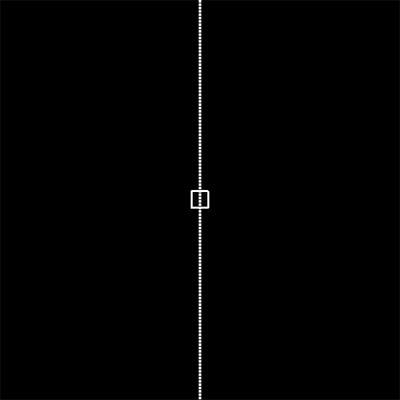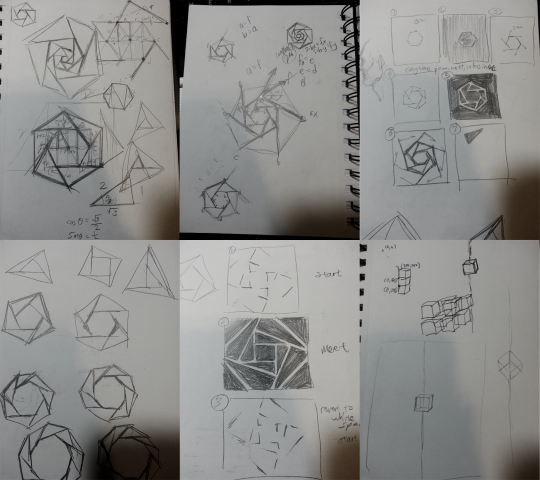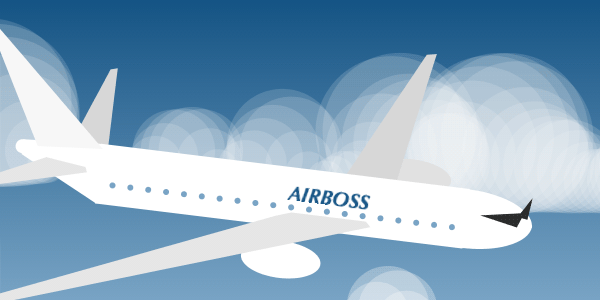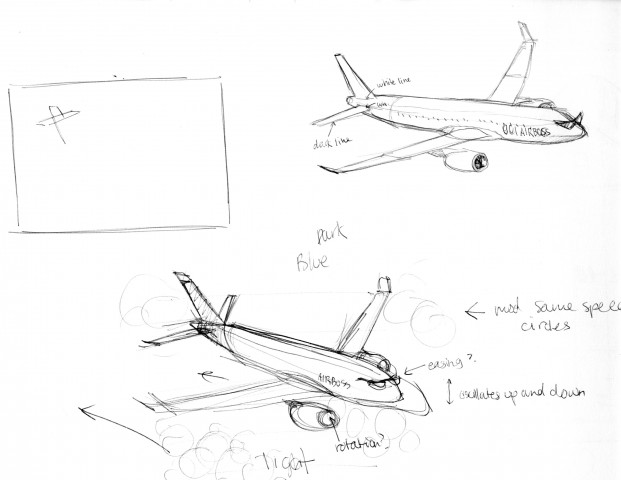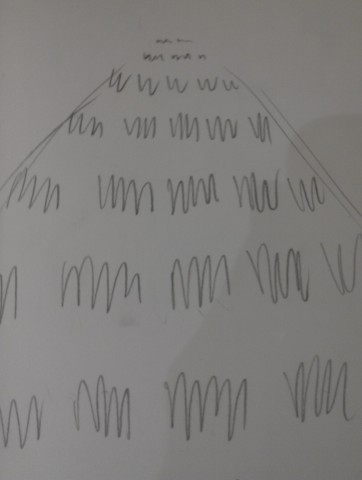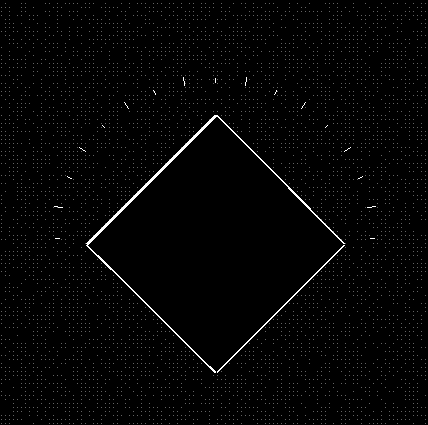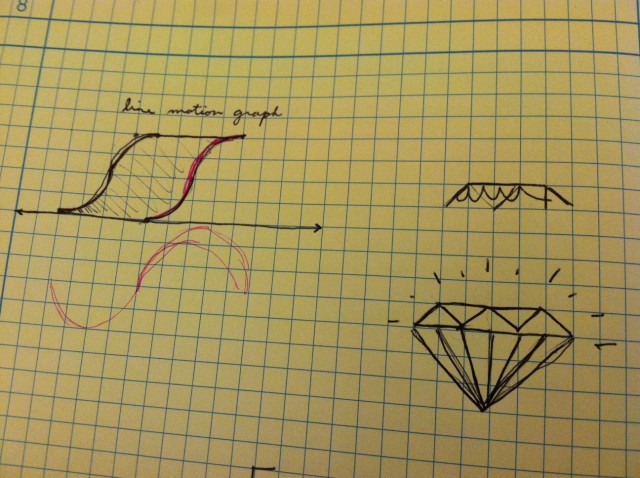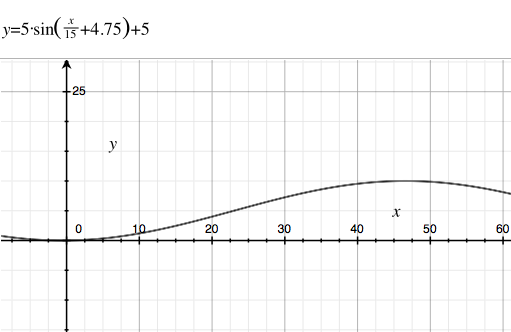
Figuring out how to animate in Processing was very difficult and frustrating for me. This was my first time using Processing. To make the process easier, I chose amusing content to animate. My animation is a reference to Them!, a movie made in the 50’s about giant ants. It’s more of an illustration than art or design. In that respect, I’d like to get more practice building forms from the shapes in Processing and get a better handle on manipulating graphics with code. I think the forms in the animation are simple, the motion itself is simple, and the concept is simple, and this easiness bothers me. My skill level isn’t high enough to create art in Processing just yet.
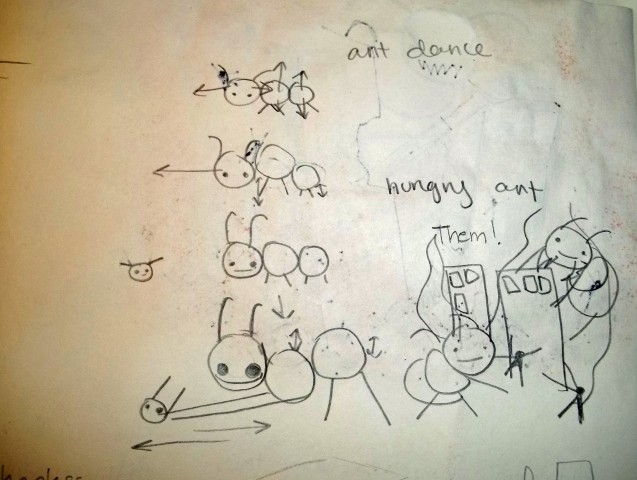

/*Rachel Moeller
EMS2 GIF
*/
int nFramesInLoop = 120;
int nElapsedFrames;
boolean bRecording;
PImage img;
void setup() {
size (500, 470);
bRecording = false;
nElapsedFrames = 0;
img=loadImage("ThemImageS.jpg");
}
void keyPressed() {
bRecording = true;
nElapsedFrames = 0;
}
void draw() {
// Compute a percentage (0...1) representing where we are in the loop.
float percentCompleteFraction = 0;
if (bRecording) {
percentCompleteFraction = (float) nElapsedFrames / (float)nFramesInLoop;
} else {
percentCompleteFraction = (float) (frameCount % nFramesInLoop) / (float)nFramesInLoop;
}
// Render the design, based on that percentage.
renderMyDesign (percentCompleteFraction);
// If we're recording the output, save the frame to a file.
if (bRecording) {
saveFrame("output/myname-loop-" + nf(nElapsedFrames,4) + ".png");
nElapsedFrames++;
if (nElapsedFrames >= nFramesInLoop) {
bRecording = false;
}
}
}
void renderMyDesign (float percent) {
background (200);
image(img,0,0);
smooth();
stroke (0,0,0);
strokeWeight (4);
//draw ant's head and body
fill(255);
ellipse(200,height/2,100,100);//head
ellipse(300,(height/2)+(percent*2)*PI,100,100);
ellipse(400,(height/2)-(percent*2)*PI,100,100);
noFill();
//urms
//front
strokeWeight(4);
line(200*percent,(height/2)+100,260,((height/2)+30)+(percent*2)*PI);//left
line(205*percent,(height/2)+100,330,((height/2)+40)+(percent*2)*PI);//right
//back
line(370,(height/2)+100,380,((height/2)+45)-(percent*2)*PI);//left
line(460,(height/2)+100,430,((height/2)+40)-(percent*2)*PI);//right
//draw eyes
fill(0);
ellipse(180,(height/2)+10,10*(percent*2),10*(percent*2));//left eye
ellipse(220,(height/2)+10,10*(percent*2),10*(percent*2));//right eye
noFill();
//antennae
line(170,(height/2)-40,170,(height/2)-80);//left
line(230,(height/2)-40,230,(height/2)-80);//right
//ends of antennae
arc(180,(height/2)-80,20,20,PI,TWO_PI);//left
arc(240,(height/2)-80,20,20,PI,TWO_PI);//right
//mouth
line(190-(percent*10),(height/2)+30,210+(percent*10),(height/2)+30);
//little guy
//head
strokeWeight(2);
fill(255);
ellipse(200*percent,(height/2)+90,20,20);
//eyes
fill(0);
ellipse(196*percent,(height/2)+90,5*percent,5*percent);
ellipse(205*percent,(height/2)+90,5*percent,5*percent);
//mouth
ellipse(200*percent,height/2+95,3*percent,3*percent);
}
